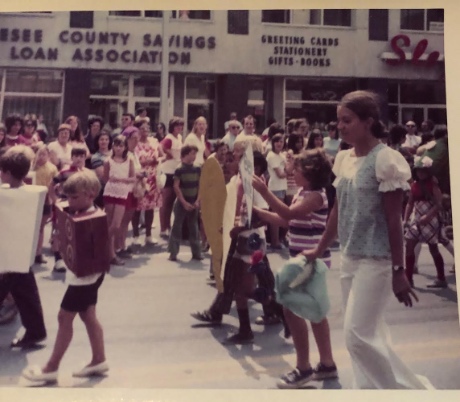Summer in the '60s: kids created their own fun outside until the streets lights came on
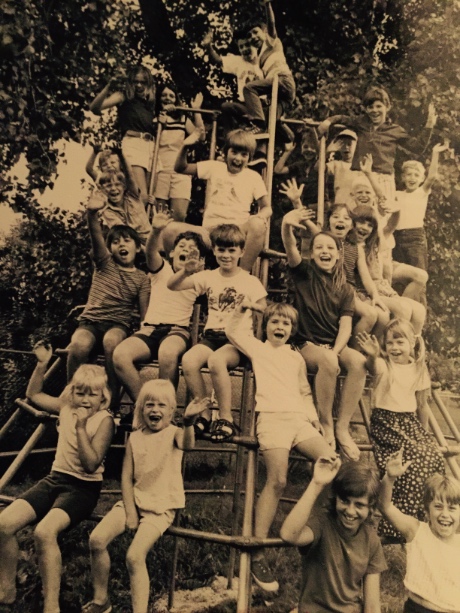
Story and photos courtesy of Anne Marie Starowitz.
In touring the Holland Land Office Museum a visitor can be taken back to the time when Joseph Ellicott surveyed the land with the help of our Native Americans. They can imagine what it was like to cook on the hearth of a fireplace.
The numerous artifacts illustrate our early history. Every decade has its own memories and artifacts. Fast forwarding to the 1960s, people in their 60s might have shared some of these childhood memories with their children.
It always seems an exaggeration, the “hardships” our parents endured, until parents in their 60s are telling similar stories to their children.
In the ‘60s, your summer would include playing outside. What that really meant was you would create your own fun and the word “bored” was not part of your vocabulary.
Children still love to play kickball today, but kickball in the ‘60s was a game that could be played for hours. Where it was played was quite an adventure. If your front yard was big enough, that was where the bases would be put. The bases would be very creative depending on what you could find for the day.
Sandlot baseball games could be found in almost any vacant lot.
If you had a piece of cardboard from Max Pies Furniture Store you could be seen sliding down the side of the South Jackson Street overpass.
Other games included hopscotch and 7UP (not the game played in school today but one that involved a ball and a slanted roof). The players had to catch, bounce, and throw a ball in seven different ways. The one who completed the seven steps was the winner.
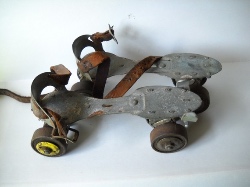
The skater needed to have a pair of shoes that had leather soles.
The skates were clamped on the shoes with a skate key.
They were quite heavy but if you were lucky enough to have a pair you learned how to maneuver them.
Misplacing the key was the biggest problem with these skates, so the skater would wear the key on a string around his or her neck.
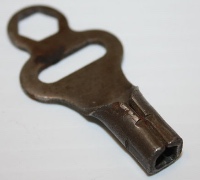
Many children frequented the two wading pools in the city. In the winter the wading pools were transformed into ice rinks.
Young people also could ice-skate on the tennis courts at MacArthur Park with music playing and hot chocolate to warm them up.
On any given winter day there would be a line of children waiting to slide down the State Street Hill, today known as Centennial Park.
Backyard pools were very rare, but there was the Community Pool or as it was called by kids of the ‘60s, the New Pool. Most of the young people were very coordinated, probably because everything they did was outside, running, walking, hopping, riding a bike.
There were many versions of playing tag and there was a game called Spud (Scroll down the link's list of 30 classic children's games to find Spud).
There was also the saying that “when the street lights come on, you are to come home.”
A highlight of the summer was the Parks Program. A young person would be waiting at the park for the park supervisor to open the door to the day’s activity.
When a child would bring home a plaster of paris mold of "The Last Supper," the mom would say how much she loved it and would wonder what she was going to do with another mold from the park. It weighed a few pounds and was painted in multicolors and had a little hook attached to the back to hang it. Somehow next summer "The Last Supper” would be gone but another plaster of paris craft would soon be brought home to be admired by the parents.
Many dads were proud owners of rattlesnake ashtrays.
There were many activities that involved movement. There was the (pre-skateboard era) bongo board, a pogo stick, and tetherball (plus, jump rope and hand-clapping games*). Youngsters could also play baseball, ride bicycles or just plain walk.
Parks would play other parks in baseball and started preparing for the annual Parks Parade on the first day the parks opened.
One year the theme was "I Never Saw a Thing Like that!" Farrall Park created a "Zelepea," which had the head of an elephant, body of a zebra, and the tail of a peacock. The head moved and water squirted out of the nose.
Every park entered a float, scrapbook and crafts to be judged on the final day of the parks program.
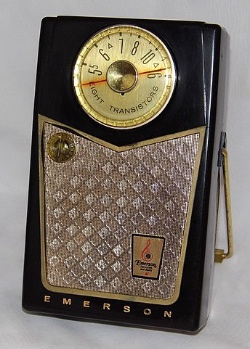
Popular music included The Beatles, The Beach Boys, and Franki Valli & the Four Seasons to only name a few.
As far as a telephone, the phone was attached to the wall and if you were lucky it had a long cord you could stretch to another room or a closet for a little privacy.
Today a child learns at an early age, not only the rules of a fire drill, but how to react to an active shooter or a bomb threat.
People in their 60s remember the bomb drills that included hiding under their desks with their arms over their heads.
Young people today will someday have to share with their children what it was like to live in their decade. One cannot imagine using the story the people in their 60s heard when they were young -- “I had to walk to and from school in blizzards, rainstorms and extreme heat uphill both ways.”
Today, there is still the Parks Program. It has changed but then everything changes over time. Unfortunately, due to the COVID-19 there will not be a parks program this year.
These are only a few memories of growing up in the 1960s, unforgettable to those who lived them.
*(Watch an updated epic patty-cake demo.).
